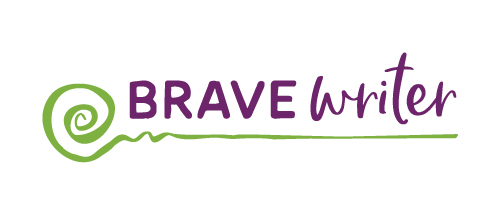Welcome to "Tea with Julie," a weekly missive by me, Julie Bogart. My wish is to give you food for thought over a cup of tea to enhance your life as an educator, parent, and awesome adult. Glad you're here. Pinkies up!
P.S. Was this email forwarded to you? Add yourself to the list and get your own!
Cincinnati, June 4, 2022
Hi Friend,
Revising, for most kids, feels like criticism. They take it personally when errors are found in their writing. Yet find them we do and we can’t very well ignore glaring mistakes in punctuation or grammar, don’t want to overlook the opportunity to encourage more details or facts.
The Philosophy of Revision
Revision, however, is not the same as mopping up the mechanics. Editing is the final step in a paper and that’s when your eyes get to be really picky about what they see. That final step means going over the typing (or handwriting) with a fine-toothed comb, looking for errors to clean up right at the last minute. The content will stay as it is.
Revision, on the other hand, is about reshaping the original piece. Its focus is the content and:
- how to narrow vague ideas,
- how to expand poorly developed ones,
- how to reorganize the piece to flow with more power and so on.
Most of the time, the mistake we parents make is that we move from draft to editing in one step. Or we might move to revising and editing at the same time. When a child risks writing and shares content with you, if the first thing you notice is the misspelled word, the child literally feels insulted and hurt (like you missed the point!).
An Example
What if you had dolled yourself up for an evening out with your husband: new hair style, brand new shoes, glittery top, slinky pants… and when you appeared in the room, he said, “Aren’t you going to wear the earrings I bought you?” or worse, “You’ve got lipstick on your teeth.” Rather than being bowled over by the original impact of your overall look, he notices first thing what you didn’t wear or he points out the one mistake in the look (something that could easily be corrected moments later after he tells you how amazing you look).
With writing, every time your kids commit words to paper, they are risking their precious:
- insights,
- words,
- knowledge,
- ideas.
Your first task, then, is to notice! Find the quirky idea, vocabulary word, or fresh insight and praise it! Be impressed by the amount of writing (no matter how much is there). Engage the material with follow-up questions that show you are interested in more of their ideas (not to elicit “better” material, but to show that you really do care about the topic and are impressed with what they know about it).
Once you’ve done that, on another day you can tackle the revision needs. Below are a few principles to keep in mind when you go to help with revision.
Revision Principles
1. The writer is the author and therefore has final editorial control.
That means you are offering ideas and suggestions, not giving commands or edicts.
2. Your suggestions for improvement are better framed as options to consider.
When you read along, it works better to say, “I loved this part that details the preparation of the meal. I’m wondering about the colors of the foods in this particular recipe. What are they? Do you think that might add a little more detail to the original?” Invite dialog around your suggestions and ask their opinions. You can offer to jot little notes in the margin so they don’t forget what you discussed together.
3. Ask your children for their ideas for revision.
Sometimes we assume that they have none, that they are satisfied with the writing as is. Truth is, if they get a few days away from the draft, they may find that when they come back to it, they have fresh energy and eyes and are interested in expanding it or enhancing it with more detail.
4. Which brings me to my most important point: Separate revision from drafting.
Never do them on the same day. Spend time enjoying and praising the draft on one day. Then let a couple days go by before revisiting the piece with revision ideas.
5. Save all editing (mechanics, punctuation, grammar, spelling, typos) for the end, once all revising is done.
Resist the temptation to correct as you go. Unless your child spontaneously corrects them upon review, you are to keep your hands in your pockets. Editing is the final step that is done after you are thoroughly finished with revising.
6. Remember: not everything has to be addressed in this paper.
Expand, enhance, correct, improve one or two things and leave the rest. The problems in this paper will magically reappear in future writing to be addressed then. We homeschool parents tend to expect perfection every time. Totally unnecessary in writing development. Allow for the growth in writing to be a journey through multiple pieces of writing, not just this one.
Warmly,

P.S. Catch up on all the “Tea with Julie” emails here!
Julie Bogart
© 2022 Brave Writer LLC™
help@bravewriter.com

.